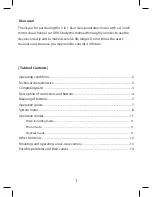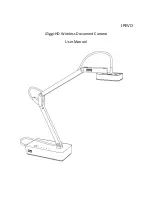
278
Technical Notes
Notes on the monitor
: The monitor is constructed with extremely high
precision; at least 99.99% of pixels are effective, with no more than 0.01%
being missing or defective. Hence while these displays may contain
pixels that are always lit (white, red, blue, or green) or always off (black),
this is not a malfunction and has no effect on images recorded with the
device.
Images in the monitor may be difficult to see in a bright light.
Do not apply pressure to the monitor, as this could cause damage or
malfunction. Dust or lint on the monitor can be removed with a blower.
Stains can be removed by wiping lightly with a soft cloth or chamois
leather. Should the monitor break, care should be taken to avoid injury
from broken glass and to prevent liquid crystal from the monitor
touching the skin or entering the eyes and mouth.
Moiré
: Moiré is an interference pattern created by the interaction of an
image containing a regular, repeating grid, such as the pattern of weave
in cloth or windows in a building, with the camera image sensor grid. If
you notice moiré in your photographs, try changing the distance to the
subject, zooming in and out, or changing the angle between the subject
and the camera.
The battery and charger
: Batteries may leak or explode if improperly
handled. Read and follow the warnings and cautions on pages xi–xiv of
this manual. Observe the following precautions when handling
batteries and chargers:
•
Use only batteries approved for use in this equipment.
•
Do not expose the battery to flame or excessive heat.
•
Keep the battery terminals clean.
•
Turn the product off before replacing the battery.
•
Remove the battery from the camera or charger when not in use and
replace the terminal cover. These devices draw minute amounts of
charge even when off and could draw the battery down to the point
that it will no longer function. If the battery will not be used for some
time, insert it in the camera and run it flat before removing it and
storing it in a location with an ambient temperature of 15 °C to 25 °C
(59 °F to 77 °F; avoid hot or extremely cold locations). Repeat this
process at least once every six months.
















































